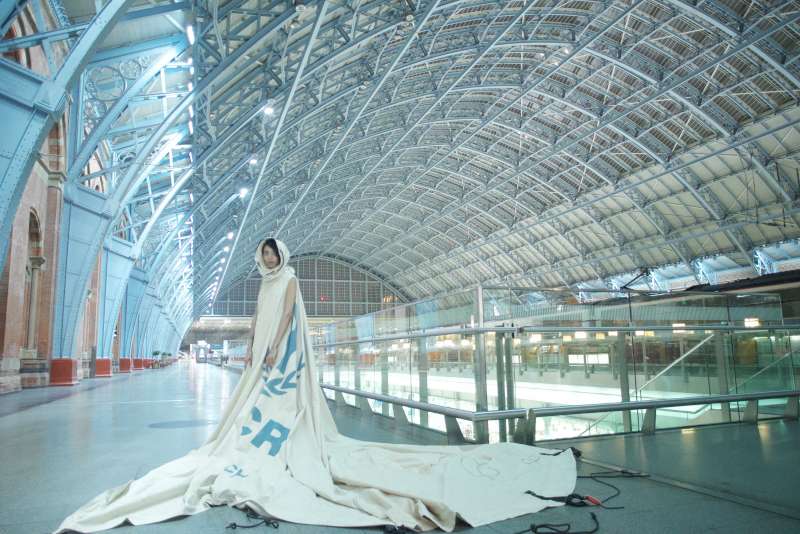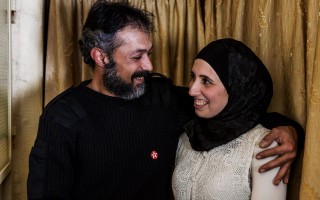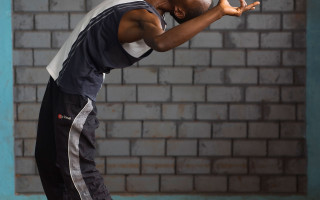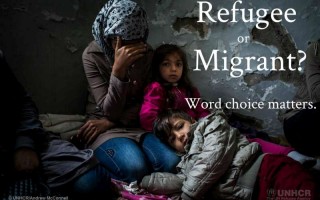
A dress made from the fabric of a UNHCR tent is on display at St Pancras International station to mark the start of COP21. © UNHCR / David Betteridge
LONDON, Nov 30 (UNHCR)—A dress made from the heavy fabric of a tent used to shelter refugees in Jordan shimmers unexpectedly into life at the busy London train station, sparkling with weather data provided by the Met Office.
The one-off couture outfit by one of Britain’s top fashion designers, Professor Helen Storey MBE, aims to highlight an issue of growing concern for the UN Refugee Agency: the role of climate change as a major factor in human displacement.
The topic is up for discussion at the United Nations Climate Change Conference in Paris from November 30 through December 11, where representatives from more than 190 countries will seek a binding global agreement to cut greenhouse gas emissions and limit the global temperature rise.
UNHCR has predicted that events linked to climate change such as droughts, floods and storms, will become the biggest driver of population displacements, both inside and across national borders, within the not too distant future.
The outfit, dubbed “Dress for Our Time,” is made from the fabric of a UNHCR tent that was used to shelter a Syrian family in Jordan’s Za’atari refugee camp, and is on display at London’s St Pancras International station. It is being decked out with patterned data from the Met Office—the United Kingdom’s national weather service—to show how the environment will be impacted if climate change continues at its current pace.
“I wanted it to be a powerful symbol of what it means to be human amid the precarious nature of our existence,” Storey explained. “In giving the tent a second life, it gives the piece an unbreakable bond to humanity and represents the importance of nurturing and protecting all people and safeguarding generations to come,” she added.
An average of 26.4 million people per year are forced from their homes by natural disasters, and an increasing number of vulnerable people live in disaster-prone areas. UNHCR warns in a recent study that, with food and water insecurity driving competition for scarce resources, even greater displacement due to climate change could follow in years to come.
Illuminated by the red glow of data, Storey’s outfit stands at St Pancras’ entrance to the Eurostar, the gateway to Paris and the Climate Change Conference, known as COP 21. Delegates passing through the station will come face-to-face with the dress, which aims to capture their imagination and provoke questions about the ways in which we respond to climate change.
“We want ‘Dress for our Time’ to help elevate people’s voices and share some of the hopes and fears that we all have around the future of our planet,” says Storey. “None of us have all the answers—but by using creative ways to discuss the issues which really matter to us and future generations—we can find new ways to explore the evidence and stay in relationship to its truth.”
By Laura Padoan in London





